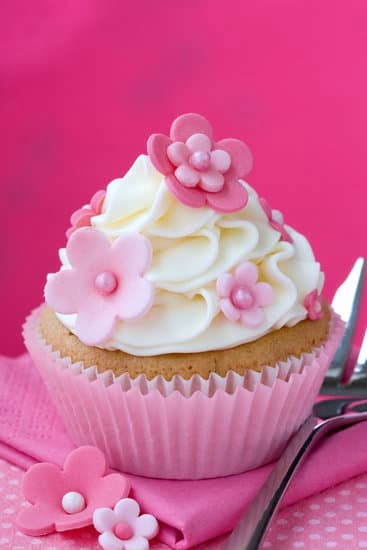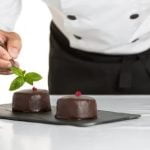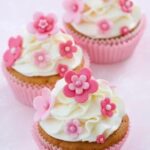Are you looking to take your cake decorating skills to the next level? Look no further than two tier cakes. In this article, we will dive into the art of two tier cake decorating ideas and discover the endless possibilities that come with this unique style.
From understanding the basics that set two tier cake decorating apart, to choosing the perfect theme and exploring different frosting techniques, we will guide you through every step of the process. Get ready to unleash your creativity and create stunning masterpieces that are sure to impress.
When it comes to cake decoration, there is something truly special about two-tier cakes. These elegant creations add a touch of sophistication and grandeur to any celebration. But what exactly sets them apart from regular single-tier cakes? In this section, we will explore the basics of two tier cake decorating and discover how it differs from other styles. From structural considerations to design elements, understanding these fundamentals is crucial for creating visually stunning results.
One of the most exciting aspects of working with two tier cakes is the opportunity it presents for creative expression. Whether you have a specific theme in mind or want to design something completely unique, choosing the perfect theme for your two tier cake is an essential step in the process. From whimsical fairytales to modern chic designs, let your imagination run wild as you explore different themes and bring them to life on your masterpiece.
Join us on this journey as we explore popular two tier cake designs that range from classic to contemporary. From timeless elegance to trendy styles, there is a design out there for everyone’s taste. Discover inspiration from real-life success stories and learn how they executed their designs flawlessly. In addition, we will provide a step-by-step tutorial on creating a stunning two-tier cake from scratch so you can begin your own decorative adventure.
Stay tuned as we delve into different frosting techniques that elevate aesthetics and add that extra magical touch to your creation. Explore different textures, colors, and finishes to enhance your design and make it truly stand out. Plus, we will discuss the importance of accessorizing your two-tier cake and the finishing touches that bring it all together. Whether it’s edible flowers or intricate sugar work, these final embellishments can turn a beautiful cake into a true masterpiece.
Get ready to embark on an exciting journey of creating jaw-dropping two tier cake masterpieces. In the following sections, we will provide tips and tricks for flawless execution, showcase real-life inspirations and success stories, and ultimately inspire you to take on the art of two tier cake decorating. So grab your apron, gather your tools, and prepare to amaze everyone with your stunning creations.
Understanding the Basics
Two-tier cake decorating is a unique and intricate form of cake artistry that requires a distinct set of skills. In this section, we will delve into the basics of two-tier cake decorating and explore what sets it apart from other cake decorating techniques.
One key aspect that differentiates two-tier cake decorating is the construction of the cake itself. Unlike single-tier cakes, two-tier cakes consist of two separate layers stacked on top of each other. The bottom tier is typically larger in diameter than the top tier, creating a visually appealing contrast and providing ample space for design elements.
When it comes to designing a two-tier cake, it’s important to consider the proportion and balance between the tiers. The size and shape of each tier should complement one another to achieve an aesthetically pleasing result. Additionally, structural stability is crucial in preventing any collapse or damage to the cake during transport or display.
Another aspect that sets two-tier cake decorating apart is the opportunity for more creativity and complexity in design. With multiple tiers, there are endless possibilities for incorporating different colors, textures, patterns, and decorations. This allows for greater versatility and customization to suit various themes or occasions.
| Cake Size | Single-Tier Cake | Two-Tier Cake |
|---|---|---|
| Diameter (inches) | 8-10 | 6-8 (top tier), 8-12 (bottom tier) |
| Servings | 10-20 | 30-50+ |
As evident from the table, two-tier cakes generally have larger diameters and serve a greater number of people compared to single-tier cakes. This highlights the increased scale and impact that two-tier cake decorating can have, making it a popular choice for celebrations or events with larger guest counts.
Understanding the basics of two-tier cake decorating is essential before delving into the more advanced techniques and designs. With this foundation knowledge, you can begin your journey towards creating stunning and memorable two-tier cake masterpieces.
Choosing the Perfect Theme
When it comes to two tier cake decorating, one of the most exciting aspects is choosing the perfect theme for your masterpiece. The theme sets the stage for the entire design and allows you to unleash your creativity in creating a visually stunning cake that matches the occasion or event. Whether it’s a birthday celebration, wedding reception, or any other special occasion, selecting the right theme is crucial in making your two tier cake truly memorable.
To begin with, consider the occasion or event for which you are creating the cake. Is it a child’s birthday party? A milestone anniversary? A baby shower?
Understanding the purpose of the cake will help you narrow down potential themes and ideas. For example, if it’s a child’s birthday party, you might consider popular cartoon characters or superheroes as your theme. On the other hand, for a romantic wedding reception, floral designs or elegant patterns might be more suitable.
Once you have a general idea of the occasion or event, let your imagination run wild. Brainstorm different themes that align with your vision and resonate with what you want to convey through your cake design. Consider elements such as color schemes, motifs, and personal preferences that can be incorporated into your chosen theme. Remember that this is an opportunity to think outside the box and create something truly unique and memorable.
Popular Two Tier Cake Designs
When it comes to two tier cake designs, the options are endless. Whether you’re looking for something classic and elegant or modern and trendy, there is a design out there that will suit your style. Here are some popular two tier cake designs that can inspire your own creations:
1. Classic Floral Design:
Classic floral designs never go out of style. Incorporating fresh or sugar flowers onto your two tier cake can add a touch of elegance and sophistication. Choose flowers that match your color scheme and arrange them in a cascading pattern or create a delicate floral wreath around each tier.
2. Rustic-Chic Design:
For those who love the natural and organic look, a rustic-chic design is perfect. Use textured buttercream frosting to create a rough finish on the tiers and then decorate with edible flowers, greenery, or berries for a whimsical touch. Adding wooden accents like tree bark or twigs can enhance the rustic feel.
3. Geometric Art Deco Design:
If you’re more into contemporary and modern styles, opt for a geometric art deco design. Use fondant to create clean lines and angles on each tier, incorporating metallic accents like gold or silver for an extra touch of glamour. This design is perfect for weddings or formal events.
4. Ombre Design:
The ombre design is versatile and easily customizable to fit any theme or occasion. Gradually blend different shades of the same color from top to bottom on each tier using either fondant or buttercream frosting. You can also experiment with different color combinations for a bold and unique look.
By choosing one of these popular two tier cake designs as inspiration, you can create a stunning centerpiece for any special occasion. Remember, don’t be afraid to put your own twist on these ideas and let your creativity shine through. The possibilities are endless when it comes to two tier cake decorating.
Step-by-Step Tutorial
Creating a stunning two-tier cake from scratch may seem like a daunting task, but with the right guidance and patience, anyone can achieve it. This step-by-step tutorial will walk you through the process of creating a beautiful two-tier cake that is sure to impress your friends and family.
Gathering Your Ingredients and Tools
Before you begin baking, make sure you have all the necessary ingredients and tools on hand. For this tutorial, you will need basic baking ingredients such as flour, sugar, eggs, butter, baking powder, and vanilla extract.
Additionally, you will need two round cake pans in different sizes to create the two-tier effect. Other tools you may need include a mixing bowl, electric mixer or stand mixer, spatula or scraper for frosting the cake, and a cake turntable for easier decorating.
Baking and Cooling the Cakes
Start by preheating your oven to the recommended temperature stated in your recipe. Prepare your cake pans by greasing them with butter or cooking spray and dusting them with flour to prevent sticking. Then carefully measure out your dry ingredients into one mixing bowl and combine them well. In another bowl, cream together your butter and sugar until light and fluffy. Gradually add in your dry ingredients alternately with milk or any other liquid specified in the recipe.
Once your batter is ready, divide it evenly between the two prepared pans. Smooth out the tops of the batter using a spatula before placing them into the oven to bake. Remember to rotate the pans halfway through baking to ensure even cooking. The cakes are done when they spring back lightly when touched or when a toothpick inserted into the center comes out clean.
After removing the cakes from the oven, allow them to cool completely on wire racks before attempting to frost or decorate them. This will prevent any melting or sliding of frosting due to residual warmth from baking.
Assembling and Decorating the Cake
Once your cakes have cooled, it’s time to assemble and decorate your two-tier cake. Start by placing the larger cake on a cake board or serving platter as the base. Spread a layer of frosting on top, using an offset spatula or butter knife to ensure even coverage. Carefully place the smaller cake on top of the frosted layer and press it down gently to secure it in place.
Next, frost the entire cake using a crumb coat, which is a thin layer of frosting that seals in any loose crumbs. Refrigerate the cake for about 30 minutes to allow the crumb coat to set. Once chilled, apply a second layer of frosting using your preferred technique-whether it be smooth or textured-to create your desired aesthetic.
Finally, you can add any additional decorations you desire, such as edible flowers, sprinkles, chocolate curls, or piped designs. Get creative and let your imagination run wild. Remember to take your time and enjoy the process of decorating your masterpiece.
By following these step-by-step instructions, you can create a stunning two-tier cake from scratch that will leave everyone in awe of your baking skills. Remember to practice patience and have fun with your creativity throughout the process. Now that you have mastered this tutorial, you can move on to exploring different frosting techniques in order to elevate the aesthetics of your two-tier cakes even further.
Exploring Different Frosting Techniques
Buttercream Frosting: A Classic Choice
One of the most popular frosting techniques for two-tier cakes is buttercream frosting. Buttercream frosting is a smooth, creamy, and versatile option that can be easily piped or spread onto the cake layers. This technique creates a traditional and elegant look for your two-tier cake.
To achieve a smooth buttercream finish, start by applying a thin layer of buttercream to the entire cake as a base coat. Allow it to chill in the refrigerator for about 15 minutes to firm up. Then, using an offset spatula, apply another layer of buttercream to the chilled base coat, working from the top down. Smooth out any imperfections with a bench scraper or Viva paper towels.
If you want to take your buttercream frosting techniques to the next level, experiment with different piping designs and textures. For example, you can use a star-shaped piping tip to create rosettes or swirls on the top tier of your cake, while using a round piping tip for polka dots on the bottom tier. The possibilities are endless with buttercream frosting.
Fondant: Creating a Flawless Canvas
Fondant is another popular choice when it comes to two-tier cake decorating. It provides a smooth and flawless canvas that allows for intricate detailing and customization. Fondant is made from sugar, water, and gelatin, which gives it a dough-like texture that can be rolled out and draped over the cake.
To apply fondant to your two-tier cake, start by rolling it out into a large sheet with a thickness of about 1/4 inch. Carefully lift and place the fondant over each tier, starting from the center and gently smoothing it down along the sides using your hands or a fondant smoother tool.
Once the fondant is applied, you can further enhance its aesthetics by adding decorative elements such as fondant flowers, bows, or cut-out shapes. These can be created using fondant molds or by hand shaping the fondant. Fondant also allows for painting and airbrushing techniques to add intricate details and color gradients to your two-tier cake.
Naked or Semi-Naked Frosting: Embracing Simplicity
For those who prefer a more rustic or natural look, naked or semi-naked frosting techniques are a great option. These techniques involve applying a thin layer of icing on the cake without fully covering it, allowing some of the cake layers to show through.
To achieve a naked or semi-naked finish, start by applying a thin crumb coat of frosting to seal in any loose crumbs. Then, using an offset spatula, lightly spread a thin layer of frosting over the cake while leaving some parts exposed. This technique creates a textured and imperfect look that is becoming increasingly popular in modern cake designs.
To enhance the aesthetics of your naked or semi-naked two-tier cake, you can add fresh flowers, fruits, or edible decorations as accents. This will not only elevate the overall appearance but also add natural colors and textures to your creation.
By exploring these different frosting techniques, you can elevate the aesthetics of your two-tier cake and create unique and visually appealing designs that fit any occasion. Whether it’s buttercream, fondant, or naked frosting, each technique offers its own set of possibilities for your cake decorating journey.
Accessorizing Your Two Tier Cake
When it comes to decorating a two tier cake, the finishing touches can make all the difference in creating a visually stunning and cohesive design. Accessorizing your cake not only adds extra flair and personality, but it also helps tie together the overall theme and aesthetic. Here are some ideas for accessorizing your two tier cake:
- Toppers: Adding a cake topper is a classic way to accessorize your two tier cake. Whether it’s a traditional bride and groom topper for a wedding cake or a fun and whimsical figurine for a birthday cake, there are endless options to choose from. Consider personalizing the topper to reflect the occasion or the personality of the recipient.
- Edible Decorations: Edible decorations are not only visually appealing but also add an element of surprise when enjoyed by guests. Consider incorporating edible flowers, such as roses or pansies, into your design for an elegant touch. Other edible decorations like chocolate ganache drips, sugar pearls, or gold leaf can add texture and sophistication to your two-tier creation.
- Ribbons and Bows: A simple yet effective way to accessorize your cake is by adding ribbons or bows. Choose ribbons that coordinate with the color palette of your design or opt for ones with patterns that match the theme of your event. Wrap them around each tier or create bows as accent pieces on different parts of the cake.
- Fresh Fruit: Incorporating fresh fruit into your two-tier cake not only adds vibrant colors but also provides a refreshing contrast in taste and texture. Arrange slices of strawberries, blueberries, raspberries, or even citrus fruits like oranges and lemons on top or between layers for an extra burst of flavor.
- Customized Designs: For truly unique and personalized cakes, consider adding customized designs as accessories. This could include hand-painted details, intricate piped designs, or even edible images printed onto fondant. These customized accessories can help bring your vision to life and make your two-tier cake truly one-of-a-kind.
Accessorizing your two tier cake is the final step in bringing your design together and creating a visually stunning masterpiece. Don’t be afraid to get creative and think outside the box when it comes to adding those finishing touches. Remember, these accessories should not only enhance the overall look of the cake but also reflect the theme and personality of the occasion or recipient. So let your imagination run wild and have fun with the accessorizing process.
Tips and Tricks for a Flawless Execution
The success of a two-tier cake lies in the flawless execution of its design and decoration. Here are some tips and tricks to ensure that your two-tier cake stands out as a masterpiece:
Firstly, it is crucial to have a sturdy foundation for your cake tiers. Use dowels or straws inserted into the bottom tier to support the weight of the upper tier. This will prevent any sagging or collapsing, ensuring that your cake remains stable throughout.
Additionally, consider using cake boards between each tier. These boards provide support and make it easier to stack and transport the cake. They also help maintain the structural integrity of each layer, preventing any potential mishaps.
When it comes to icing your two-tier cake, it’s important to crumb coat each layer before applying the final frosting. This involves thinly spreading a layer of icing across the entire surface of the cake to lock in any loose crumbs. Once the crumb coat has dried, you can proceed with adding a thicker layer of frosting for a smooth finish.
To create clean edges on your cake, use a bench scraper or offset spatula dipped in hot water to smooth out any imperfections. This technique helps achieve sharp edges and removes excess frosting for a professional look.
Another useful tip is to chill your cakes before decorating them. A chilled cake is firmer and easier to work with when adding intricate details such as fondant accents or piped designs. It also helps set the frosting and prevents smudging or melting during transport.
Lastly, don’t be afraid to experiment with different techniques and tools when decorating your two-tier cake. From piping intricate designs using buttercream or royal icing, to adding texture with fondant molds or stencils, there are countless possibilities for creating unique and eye-catching designs.
By following these tips and tricks, you can ensure that your two-tier cake stands out as an exquisite creation that will impress both visually and tastefully. Remember that practice makes perfect, so don’t hesitate to try out different techniques and make adjustments as needed. With perseverance and creativity, you can achieve a flawless execution that will leave everyone in awe of your two-tier cake decorating skills.
Showcasing Two Tier Cake Masterpieces
In the world of cake decorating, there are countless talented individuals who have mastered the art of two-tier cake design. These skilled bakers and decorators have created awe-inspiring masterpieces that never fail to impress. In this section, we will showcase some real-life inspirations and success stories from these cake decorating experts.
One such success story is Mary Smith, a self-taught cake decorator who turned her passion into a successful business. Mary started experimenting with cake decorating as a hobby, but soon realized her talent for creating stunning two-tier designs.
Through dedication and hard work, she built a name for herself in the industry and now runs her own popular bakery. Mary’s unique style and attention to detail have earned her recognition and praise from customers all over the country.
Another inspiring example comes from John Michaels, an award-winning cake artist known for his innovative designs and techniques. John has been featured in numerous magazines and showcases his creations at prestigious cake competitions around the world. His ability to combine traditional elements with modern twists has set him apart as a true artist in the field of two-tier cake decorating.
A common aspect that sets these success stories apart is their willingness to continuously learn and push boundaries in terms of creativity. They attend workshops, participate in seminars, and collaborate with other professionals to stay up-to-date with the latest trends and techniques in the industry. Their commitment to honing their skills is evident in each masterpiece they create.
These real-life inspirations serve not only as examples of what can be achieved through hard work and dedication but also provide endless inspiration for aspiring bakers and decorators. Whether you dream of opening your own bakery or simply want to create beautiful cakes for friends and family, these success stories show that anything is possible with passion, perseverance, and a little bit of creativity.
| Name | Background | Accomplishments |
|---|---|---|
| Mary Smith | Self-taught cake decorator | Owns a popular bakery, recognized for her unique style and attention to detail |
| John Michaels | Award-winning cake artist | Featured in magazines, showcases creations at prestigious cake competitions around the world |
Conclusion
In conclusion, embarking on your two tier cake decorating journey can be a fun and rewarding experience. By understanding the basics of two tier cake decorating and choosing the perfect theme, you can unleash your creativity and create stunning cakes that are sure to impress. From classic to contemporary designs, there are endless possibilities when it comes to two tier cake decorating.
The step-by-step tutorial provided in this article serves as a helpful guide for creating a stunning two tier cake from scratch. By following the instructions and exploring different frosting techniques, you can elevate the aesthetics of your cake and add that extra wow factor.
Remember to also pay attention to the finishing touches by accessorizing your two tier cake. Whether it’s adding edible flowers or intricate designs, these details can make all the difference in creating an eye-catching masterpiece.
Lastly, don’t forget to incorporate tips and tricks for a flawless execution. From ensuring a level base to using sharp tools for clean cuts, these small details can contribute to making your two tier cake stand out.
Frequently Asked Questions
How do you structure a two tier cake?
Structuring a two-tier cake involves ensuring the stability and support of both layers. To begin, it is crucial to select appropriately sized cake boards that are sturdy enough to hold the respective tiers. The bottom tier should be placed on a cake drum or a thick board for additional support.
It is essential to level and layer each cake tier before stacking them. This can be achieved by trimming any uneven edges and applying a layer of icing or filling between each cake layer. To assemble the two-tier cake, center the smaller top tier on the exact center of the bottom tier, using dowels or straws inserted into the lower tier to provide stability and prevent collapse.
How do you stack two cakes on top of each other?
Stacking two cakes on top of each other requires careful attention to ensure stability during transportation and serving. First, prepare both cakes separately by leveling, filling, and frosting each one. Before stacking, measure and mark the center point on both cakes’ tops using toothpicks as guides for alignment.
To stack the cakes, place a proper-sized cake board on top of the bottom cake tier’s well-supported surface. Next, apply a thin layer of frosting or buttercream over this board to help anchor the upper tier in place securely. Carefully lift and center the top tier onto the frosted board while aligning with the marked center points on both tiers precisely.
How many layers should a 2 tier cake have?
The number of layers in a two-tier cake depends on personal preference and desired aesthetics while considering structural stability. Typically, each individual tier should have three to four layers for optimal taste and height without compromising stability.
This means that a two-tier cake could potentially have anywhere from six to eight layers overall – three to four layers per each tier respectively. However, it is important not to exceed thicknesses beyond what your recipe or desired final appearance can accommodate adequately without risking collapsing or being unbalanced when stacked together as one cohesive structure

Welcome to our cake decorating blog! My name is Destiny Flores, and I am the proud owner of a cake decorating business named Cake Karma. Our mission is to provide delicious, beautiful cakes for all occasions. We specialize in creating custom cakes that are tailored specifically to each customer’s individual needs and tastes.





